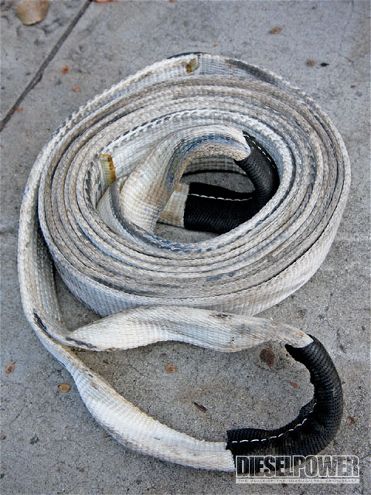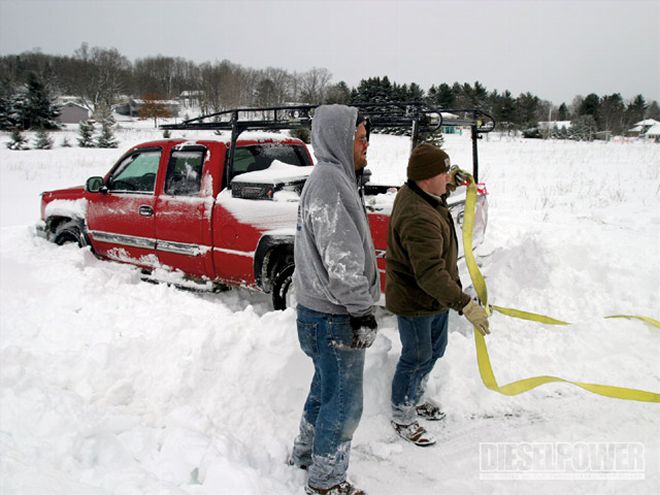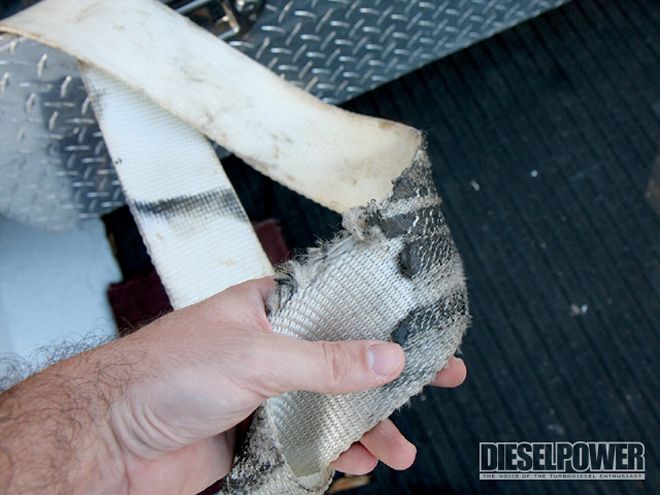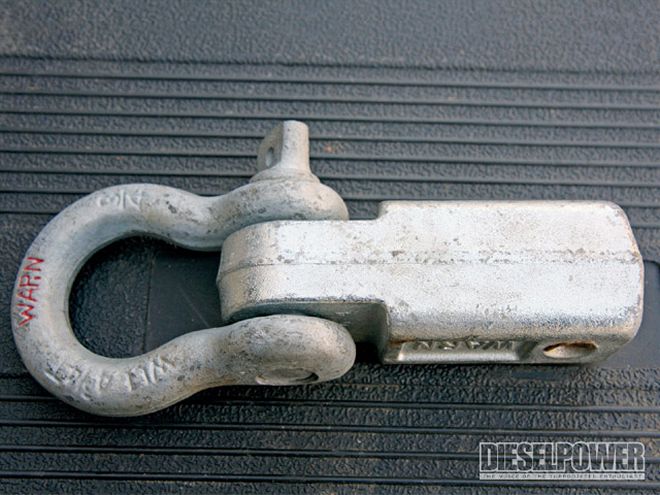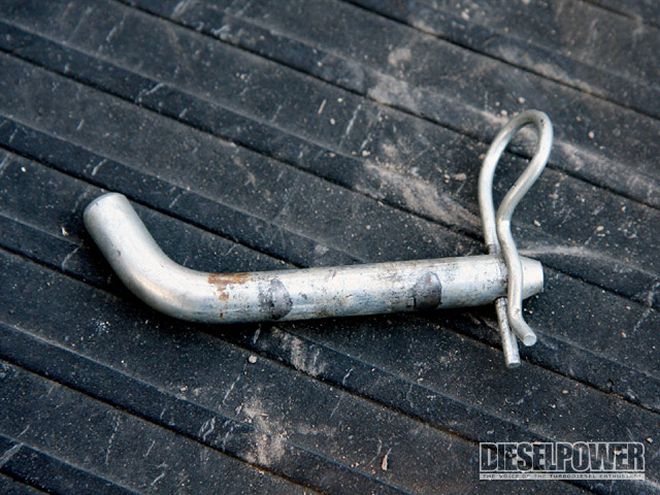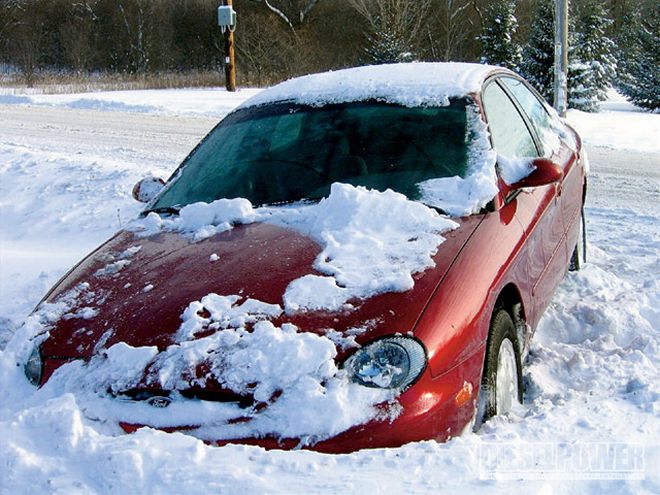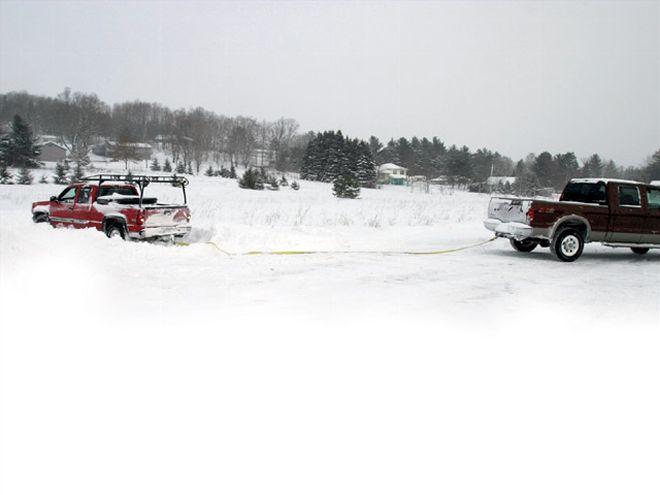
| diesel Tow Truck towing
One of the best things about living in the country is having a four-wheel-drive diesel in the winter. If you live in an area where it snows, chances are, you and your truck are on active vehicle recovery duty every time you drive somewhere. After all, your diesel is already making more horsepower and torque than the average tow truck.
And we're not talking city streets here, where a plow truck will find you sooner or later on one of its rounds. We're talking county-line roads that easily drift shut, rarely see a good plow all winter long, and are usually inaccessible for the average tow truck. So, when a typical tow truck isn't an option, your diesel truck becomes the primary tool for getting someone out of a ditch, field, hillside, driveway, or wherever else the white stuff has trapped them. Obviously, common sense plays a major role in pulling vehicles out of ditches, but it's easy to get carried away and try to just get the job done. The most important thing to remember is to take your time. Hook to something solid, start pulling gradually, and resort to yanking and jerking only when absolutely necessary.
What To Use: Tow Straps VS. ChainsIn a worst-case scenario, you're going to have to hook bumper-to-bumper with the vehicle you're trying to pull out. And, while simply hooking on and slowly creeping forward can work, most of the time a little to a lot of yanking will be involved. So, don't use chains if you can help it. Oftentimes you don't know how worn-out and brittle a chain might be. Snapping a chain usually means dented tailgates and bumpers, or even broken windshields, grilles, or windows. Nylon tow straps are safer, lighter, and are actually stronger.
What You Need To Be PreparedIf you plan on recovering a lot of vehicles, having spare tools never hurts. Having two receiver shackles, hitch pins, or even a clevis hook or keeper would be worth it, as you may need to hook up receiver-to-receiver, and the other driver might not have one. If you want to be prepared to pull out compact, front-wheel-drive cars, a T-hook would also be a good investment. Choose a rot-resistant tow strap with a minimum weight rating of 15,000 pounds, 4-inches in width, and at least 20-feet in length. Depending on the type of angle, or how much pulling room you have to work with in a given situation, having two tow straps, varying in length, is a good idea. Of course, having two of anything is a good idea if something breaks. Most importantly, be prepared now-don't wait for the next snow storm or blizzard to invest in a couple tow straps. In an emergency, everyone thinks the same, and there won't be any left to buy.
Tire size and extra weight in the bed can also make a huge difference. Narrow tires will dig in easier than wider, oversized tires will, and will find traction easier. Sandbags, tractor weights, or anything with substantial weight placed over the rear axles will aid with traction as well. In addition to having recovery hardware, make sure you are physically prepared to battle the winter elements. Recovering a stuck vehicle buried in the snow is no easy or simple task. Keep a pair of spare gloves, boots, a coat, and even overalls in your cab, as you're more than likely going to have to dig out an opening in the snow to gain access to the stuck vehicle's underbody. In addition, keeping a reliable flashlight with you will help while recovering vehicles at night, and will ensure you hook to something durable that will withstand the stress of the pull.
Where To HookNearly every car, truck, or van has a recovery tow point, or a place that the manufacturer has hooked to before. While not necessarily for the same reason, they've done it for freight purposes. Most newer four-wheel-drive trucks and SUV's come equipped with front tow hooks, and some smaller cars have a loop built into their unibody. But, for those with no engineered areas to hook onto, a T-hook would come in very handy, as they can simply be hooked onto any place where the car has substantial structure. Be especially careful when hooking to a low-profile sports car (like a new Mustang). It is in your best interest to hook on in the middle of the car to the transmission crossmember, and use the longest strap possible to spread the load of the pull. Using a long tow strap also allows the towing vehicle to be as far from the car as possible to prevent the lower front fascia of the stuck car from ripping off.
Pulling MethodsOftentimes, pulling a vehicle out of a ditch requires you to hook up and pull on the road. While this can work, pavement with a layer of ice and snow covering it provides little-to-no traction. When possible, without subjecting your own vehicle to getting stuck, position yourself on the other side of the ditch (like in a field) for better traction. This is when having a 40-foot tow strap comes in handy, and allows you to pull the stuck vehicle back onto the road. It's important to remember not to put your own vehicle out of commission when pulling someone out. If getting stuck is even a possibility, don't attempt it because it's just more money for the tow truck operator later on. Don't try to pull out semis, heavy equipment of considerable size, or plow trucks with 4 tons of salt in the back. The sacrifices your truck will make in the effort won't be worth the outcome. Kind of like a bulldozer getting stuck down in a waterway in the middle of a rainstorm, it's going to be a while before it gets out.
Always Pull ForwardTrying to pull someone out with your truck in Reverse should be avoided. Your truck is built to pull forward, which is why your receiver is in the rear. Pulling forward keeps weight on both the rear and front axles, for optimum traction. Pulling in Reverse puts tremendous stress on your front end, distributes virtually no weight for traction to the rear axle, and can't get you up to speed if you have to resort to yanking. Stress on the front axle, axleshafts, hubs, and differential can result in two stuck vehicles, one of which might even be blocking the snow-drifted road you're on. Being prepared for winter is one thing, but preparing yourself and your truck to pull out other cars is another. The better equipped you are, the easier it will be for your truck to live up to its tow truck capability. Remember to be careful when the white stuff falls, but also remember to have fun. Playing "tow truck" is rooted deep in a diesel's long list of attributes.
Anatomy Of A Stuck Vehicle*Find a solid point to hook to on the stuck vehicle.
*Pull the car out the way it came in. Hook to the rear of the car. There should be a tie-down hook, or loop at the rear of the car connected to its subframe.
*After hooking up, be careful not to yank the rear bumperoff. Using the longest available tow strap reduces the chances of the strap pulling up and crushing the bumper.
*Although it won't help much until you get the car moving and momentum is on your side, have the driver put the car in Reverse for a little added help while you pull them. The easier you make it on yourself, the quicker you'll get the car out.
 | diesel Tow Truck towing
One of the best things about living in the country is having a four-wheel-drive diesel in the winter. If you live in an area where it snows, chances are, you and your truck are on active vehicle recovery duty every time you drive somewhere. After all, your diesel is already making more horsepower and torque than the average tow truck.
And we're not talking city streets here, where a plow truck will find you sooner or later on one of its rounds. We're talking county-line roads that easily drift shut, rarely see a good plow all winter long, and are usually inaccessible for the average tow truck. So, when a typical tow truck isn't an option, your diesel truck becomes the primary tool for getting someone out of a ditch, field, hillside, driveway, or wherever else the white stuff has trapped them. Obviously, common sense plays a major role in pulling vehicles out of ditches, but it's easy to get carried away and try to just get the job done. The most important thing to remember is to take your time. Hook to something solid, start pulling gradually, and resort to yanking and jerking only when absolutely necessary.
What To Use: Tow Straps VS. Chains
| diesel Tow Truck towing
One of the best things about living in the country is having a four-wheel-drive diesel in the winter. If you live in an area where it snows, chances are, you and your truck are on active vehicle recovery duty every time you drive somewhere. After all, your diesel is already making more horsepower and torque than the average tow truck.
And we're not talking city streets here, where a plow truck will find you sooner or later on one of its rounds. We're talking county-line roads that easily drift shut, rarely see a good plow all winter long, and are usually inaccessible for the average tow truck. So, when a typical tow truck isn't an option, your diesel truck becomes the primary tool for getting someone out of a ditch, field, hillside, driveway, or wherever else the white stuff has trapped them. Obviously, common sense plays a major role in pulling vehicles out of ditches, but it's easy to get carried away and try to just get the job done. The most important thing to remember is to take your time. Hook to something solid, start pulling gradually, and resort to yanking and jerking only when absolutely necessary.
What To Use: Tow Straps VS. Chains